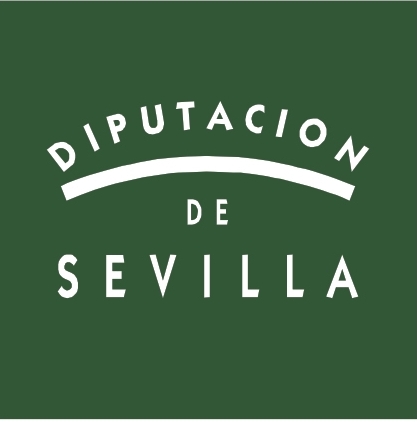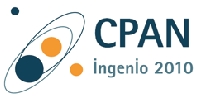How to reach Sevilla?
Some links of interest
By plane
Sevilla airport, known as San Pablo airport (IATA code: SVQ), connects the city to several important capitals of Europe as London or Paris apart from other Spanish cities as Madrid or Barcelona. A complete (an updated) list of airlines and destination can be found at Wikipedia. Extra information could be found at AENA web page.
Below you can find a list of airports with direct flights to Sevilla:
- Madrid-Barajas
- Barcelona
- Valencia
- Palma de Mallorca
- London-Heathrow, London-Gatwick and London-Stansted
- Paris-Orly and Paris-Charles de Gaulle
- Rome-Fiumicino
- Lisbon
- Amsterdam
We recommend your flight connection through Barcelona. In case you need to come through Madrid-Barajas airport, take into account that the domestic flights terminal (T4) is several kilometers far from the international flights terminals (T1-T3). Make sure about this fact when scheduling the time. A detailed map of the airport is available at AENA.
There are two international airports close to Sevilla: Málaga airport 250 kms far and Faro airport (in Algarve, Portugal) 200 kms far. There are buses connecting those cities with Sevilla. Málaga is also connected by regional trains (see at RENFEwebsite).
By train
Sevilla train station (called Santa Justa station) is connected to Madrid (Atocha station) and Barcelona (Sants station) through a high-speed rail (AVE). The trip is covered in 2h35' and 5h40', respectively. Prices and tickets for those destinations and many others in Spain are available at RENFE webpage.
By car
There are several motorways that cross Sevilla, as shown below:
- A4, connecting to Madrid, Córdoba and Cádiz.
- A92, connecting to Málaga and Granada.
- A49, connecting to Huelva and Algarve (Portugal).
- A66, connecting to Extremadura and Lisbon.
How to move in Sevilla?
Taxis
It is the easiest option if you come from the airport. The airport trip costs 20-25€, depending on the time and the baggage. Normal trips within the city cost around 6-8 €.
Buses and tramway
It is the best option if you do not want to take a taxi. There is a bus from the airport that lets you in Prado San Sebastian, where you can commute to city buses to get your hotel. It is quite cheap compared to the taxi (around 4€ for a single trip). The schedule and stops of the airport bus are shown here.
Underground
There is an underground (metro) line with some stations (San Bernardo, Prado San Sebastián and Puerta Jerez) connecting to the tram. A detailed page with the underground list of stations, timetables and fees can be found at this web page (unfortunately in Spanish).
City (commuter) train
There is a commuter train called "cercanías" (lines C-1 and C-4) that connects the main train station (Santa Justa) with San Bernardo station, where a connection to the tram can be made. You can find here timetibles and fees of the commuter train.
Bicycle
Sevilla is plenty of bike lanes crossing the whole city. There is also a service of bike hiring with many stops close to the bike lanes (and, of course, the conference venue). There is a 7 days subscription whose fee is only 10€ as long as trips are shorter than 30 minutes (there is no minimum waiting time between trips, being each one shorter than 30 minutes).
What to do in Sevilla?
Sightseeing
This is the typical activity doing for most of tourist visiting Sevilla. The city is plenty of monuments and museums that are worth visiting. Sevilla owns one of the oldest and largest downtows in Europe. Here we detail some of them:
- Giralda Tower: This Almohad tower is the most famous monument of Sevilla and can be seen from almost everywhere in the downtown. It was built as a minaret for the Mosque, but after the conquer of Sevilla by Christians, the Mosque was demolished and a Cathedral was build instead. The tower was preserved and turned into a belltower.
- Cathedral: Sevilla Cathedral, the second largest Catholic temple in the world after St. Peter's church, is a mixture of styles although the Gothic is the predominant one. Payment is needed in order to visit it and the tower, although during worship the entrance is free to the main nave and some of the chapels.
- Alcázar (Royal Palace): It names derives from an Arab word meaning 'castle'. It constitute the prototypical example of Mudéjar style (a 'mixture' between Arabian and Gothic styles; Arabians that lived in Castilla received the name of 'Mudéjares'). Built in the 14th century after demolishing the old Alcázar, it has been using since then as the palace for the Spanish kings (or queens) when they visited Sevilla. For this reason, it has been expanded including rooms in others styles, specially Renacentist, as well as a romantic garden.
- María Luisa Park: The gardens of Saint Elmo's palace (now, seat of Andalusian Goverment) was opened so that they could be enjoyed by the city, becoming a public park. It was the heart of the Iberoamerican Fair celebrated in 1929. Some monuments, embedded in the park, were left as a legacy of that Fair. These are Plaza de España, Mudéjar Pavilion (now a museum) and the Archeological Museum.
- Fine Arts Museum: Most of the masterpieces of Sevilla painters and sculptors are hosted in this museum. Usually, its entrance is free for EU citizens.
- Churches: Sevilla's downtown in plenty of churches of Mudéjar and Baroque style.
These monuments and some other ones are shown in a Workshop Map that will be available closer to the date of the workshop.
Miscellaneous
- Walking along the riverside is a wonderful experience, specially at sunset or at nights. Many people also sunbath during evenings, although it is not very recommendable in July because of the high temperatures. Swimming is forbidden.
- Expo'92: Sevilla hosted the World Fair of 1992. Its heritage is, apart from many changes in the city, a Technological Park (preserving several pavilions of the original exposition) and a Them Park called Isla Mágica. It is very recommendable to visit in case you are coming with children.
- Sports: Indoubtely, the most important sport for Seville citizens in football, followed by basketball. They can be practised in many places all over the city. Aquatic sports are also commonly practised. The price for renting a canoe or kayak is very cheap.
Surroundings
- Itálica: The ruins of this Roman city (in which were born the Emperors Hadrian and Trajan) can be visited in the town of Santiponce, which is less than 10 kilometers far from Seville. Its entrance is free for UE citizens.
- Towns: Sevilla is the capital of a province with the same name. There are many towns in the province that are worth visiting. Carmona, Écija and Osuna are famous for their monuments. There are also several towns located in the mountains as Cazalla de la Sierra, Constantina or Estepa.
- Andalusian cities: Sevilla is also the capital of the Autonomic Community of Andalusia. If you are interested in visit monumental cities, it is worth visiting Córdoba and Granada. Information for beaches, is below.
- Beaches: This is the main lack of the province of Sevilla. Nevetheless, there are beaches (some of them at less than 100 kilometers) in the provinces of Huelva, Cádiz and Málaga which are relatively close to Sevilla.
More information
- Turismo de Sevilla: Official page of the Tourism Office of Sevilla.
- Turismo Sevilla TV: A TV channel broadcasting in the Internet where very interesting information can be found about Sevilla.
- Turismo de la Provincia: Here you can find more information about the province of Sevilla.
- Andalucía.org: Official page of the Andalusia Tourism Office
- El Giraldillo: A cultural agenda (in Spanish)
- Andalunet: Another cultural agenda (also in Spanish) with some other useful information.





